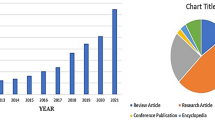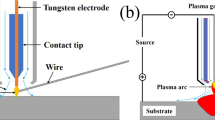Abstract
Multi-material design offers cost-efficient lightweight solutions for automotive body-in-white production. Ultra-high strength steels remain an essential part of the lightweight construction and are increasingly used in combination with components made of aluminum alloys in multi-material body designs. For these applications, the commonly used joining processes (riveting, clinching, resistance spot welding, etc.) have been pushed to their technological limits and a further technological development is needed. The present research describes a new joining technology based on resistance welding process for joining ultra-high strength steel 22MnB5 (AS150) with aluminum sheets AW 6016. The technology consists of a two-stage resistance spot welding process with an additional simple cost-effective joining element. Its implementation allows joining aluminum and steel on extremely short flanges of 10 mm using short time projection welding with high-energy concentration. Joining elements—cylinders made of Cu- and Fe-based wires with diameter 1.6 mm and length 10 mm - were welded using the common resistance spot welding equipment. Experimental results have shown that all tested materials for joining dissimilar steel-aluminum compounds can be successfully used and the weld current ranges are sufficient for industrial application.












Similar content being viewed by others
References
Hörhold R, Müller M, Merklein M, Meschut G (2016) Mechanical properties of an innovative shear-clinching technology for ultra-high-strength steel and aluminium in lightweight car body structures. In: Welding in the World 60(3):613–620. https://doi.org/10.1007/s40194-016-0313-0
Jank N, Staufer H, Bruckner J (2008) Heft 5) Schweißverbindungen von Stahl mit Aluminium – eine Perspektive für die Zukunft. In: BHM 153:189–192. https://doi.org/10.1007/s00501-008-0373-6
Ma Y, Lou M, Li Y, Lin Z (2018) Effect of rivet and die on self-piercing rivetability of AA6061-T6 and mild steel CR4 of different gauges. In: Journal of Materials Processing Technology 251:282–294. https://doi.org/10.1016/j.jmatprotec.2017.08.020
Meschut G, Hahn O, Janzen V, Olfermann T (2014) Innovative joining technologies for multi-material structures. In: Welding in the World 58(1):65–75. https://doi.org/10.1007/s40194-013-0098-3
Ueda K, Ogura T, Nishiuchi S, Miyamoto K, Nanbu T, Hirose A (2011) Effects of Zn-based alloys coating on mechanical properties and interfacial microstructures of steel/aluminum alloy dissimilar metals joints using resistance spot. In: Materials Transactions Vol 52(5):967–973. https://doi.org/10.2320/matertrans.L-MZ201108
Miyamoto K, Nakagawa S, Sugi C, Sakurai H, Hirose A (2009) Dissimilar joining of aluminum alloy and steel by resistance spot welding. In: SAE Int J Mater Manuf Vol 2:1. https://doi.org/10.1016/j.matdes.2019.107585
Friedrich HE (2013) Leichtbau in der Fahrzeugtechnik. Wiesbaden
Hendrawan MA, Purboputro PI (2018) Influence of zinc on mechanical behavior of resistance spot welding of aluminum and stainless-steel. In: AIP Conference Proceedings:S. 30048. https://doi.org/10.1063/1.5042968
Oikawa, H.; Ohmiya, S.; Yoshimura, T.; Saitoh, T.: Resistance spot welding of steel and aluminium sheet using insert metal sheet. In: Science and Technology of Welding and Joining (1999) Vol. 4, No. 2. https://doi.org/10.1179/136217199101537608
Heiko R, Yang Y, Broda T, Koltschote C (2013) Neuartige Widerstandspunktschweißverfahren für den automobilen Aluminium-Stahl-Mischbau. Duisburg
Zvorykina, A.; Holtschke, N.; Hübner, A.; Jüttner, S.: Manufacturing of steel-aluminum joints using combinatio of ultrasonic and resistance spot welding (in German). Untersuchungen zur Herstellung von Stahl-Aluminium-Verbindungen durch das kombinierte Ultraschall- und Widerstandspunktschweißen. Leipzig 2016
Lu Y, Mayton E, Song H, Kimchi M, Zhang W (2019) Dissimilar metal joining of aluminum to steel by ultrasonic plus resistance spot welding - microstructure and mechanical properties. In: Materials & Design 165:S. 107585. https://doi.org/10.1016/j.matdes.2019.107585
Meschut G, Janzen V, Olfermann T (2014) Innovative and highly productive joining technologies for multi-material lightweight car body structures. In: Journal of Materials Engineering and Performance 23(5):1515–1523. https://doi.org/10.1007/s11665-014-0962-3
Holtschke N, Jüttner S (2017) Joining lightweight components by short-time resistance spot welding. In: Welding in the World 61(2):413–421. https://doi.org/10.1007/s40194-016-0398-5
Habenicht, G.: Kleben. Grundlagen, Technologien, Anwendungen, 6., aktualisierte Aufl. Berlin, Heidelberg 2009
Kuhlmann, M.; Wohner, M.; Mitzschke, N.: Einfluss von Prozessbedingungen beim Formhärten auf die Verbindungseigenschaften gefügter Bauteile. In: Merklein, M.; Warmblechumformung, E. W. (Hrsg.): 12. Erlanger Workshop Warmblechumformung. Tagungsband zum 12. Erlanger Workshop Warmblechumformung : Erlangen, den 23. November 2017. Bamberg 2017
Rusch, H.-J.; Stocks, N.: Vom Nutzen des Querdenkens. In: DVS - Deutscher Verband für Schweißen und verwandte Verfahren e.V., Düsseldorf (Hrsg.): 24. DVS-Sondertagung Widerstandsschweißen. Treffpunkt Widerstandsschweißen 2019
Ketzel, M.-M.; Hertel, M.; Zschetzsche, J.; Füssel, U.: Heat development of the contact area during capacitor discharge welding. In: Welding in the World 50 (2019) 1, E2. https://doi.org/10.1007/s40194-019-00744-x
Deutsches Institut für Normung e.V.: SEP1220-2: Prüf- und Dokumentationsrichtlinie für die Fügeeignung von Feinblechen aus Stahl - Teil 2: Widerstandspunktschweißen (2011). Berlin
Deutscher Verband für Schweißen und verwandte Verfahren e.V.: DVS 2911: Kondensatorentladungsschweißen - Grundlagen, Verfahren und Technik. (in German) (2016)
Acknowledgments
The authors would like to thank AiF for funding the IGF-Project IGF-No. 20164 BR/FOSTA P1294 of the German Research Association for Steel Application (FOSTA), which was part of the program to support cooperative industrial research (Industrielle Gemeinschaftsförderung (IGF)) by the Federal Ministry for Economic Affairs and Energy, following a decision of the German Bundestag. Equal thanks go to all companies, colleagues, and students who contributed their support, knowledge, and effort to the project.
Author information
Authors and Affiliations
Corresponding author
Additional information
Publisher’s note
Springer Nature remains neutral with regard to jurisdictional claims in published maps and institutional affiliations.
Recommended for publication by Commission III - Resistance Welding, Solid State Welding, and Allied Joining Process
Rights and permissions
About this article
Cite this article
Zvorykina, A., Sherepenko, O. & Jüttner, S. Novel projection welding technology for joining of steel-aluminum hybrid components—part 1: technology and its potential for industrial use. Weld World 64, 317–326 (2020). https://doi.org/10.1007/s40194-019-00833-x
Received:
Accepted:
Published:
Issue Date:
DOI: https://doi.org/10.1007/s40194-019-00833-x




